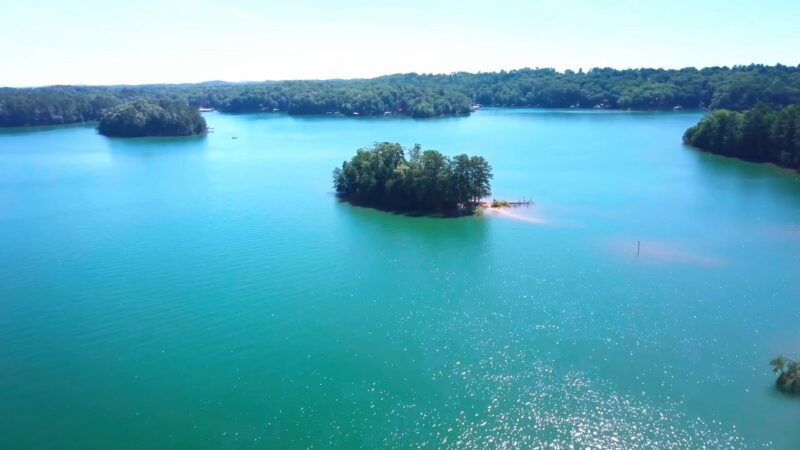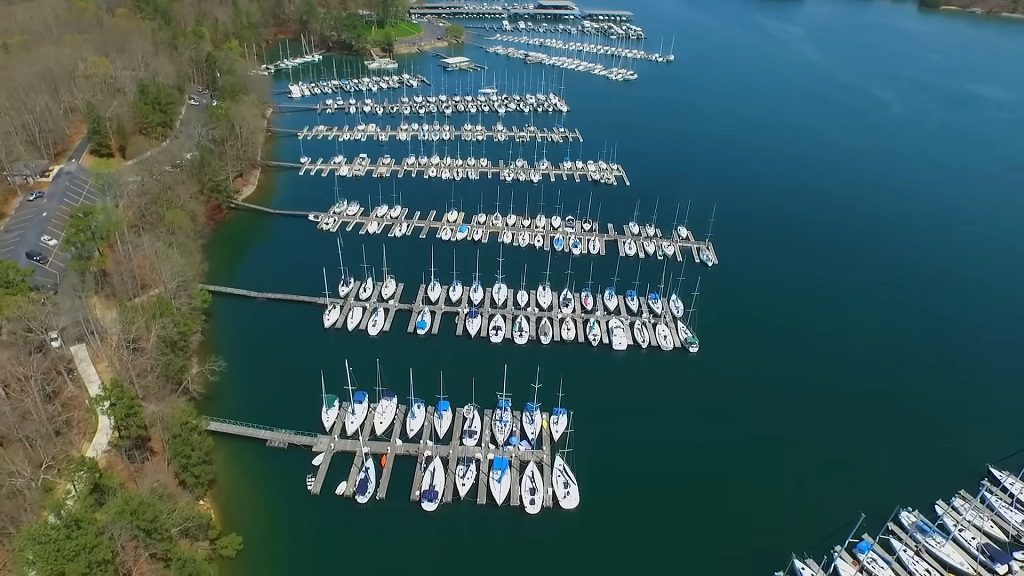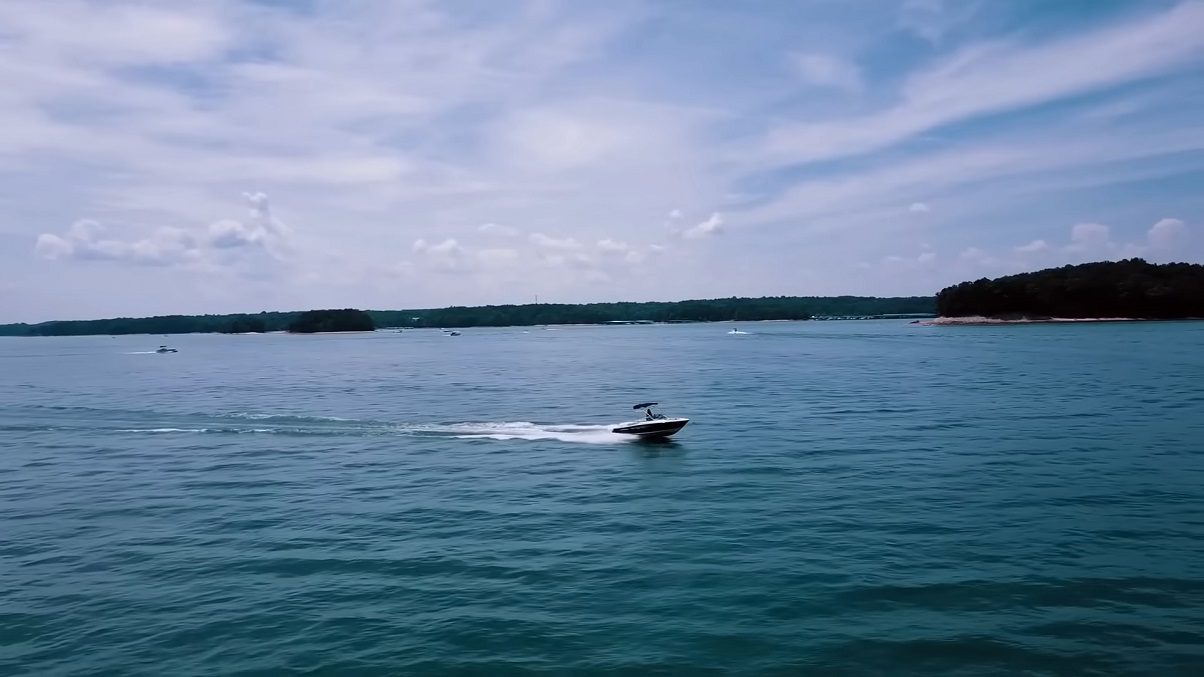
Share Post:
Lake Sidney Lanier, better known simply as Lake Lanier, is one of the most talked-about lakes in America. If you live anywhere in Georgia or have spent time in the Southeast, chances are you’ve heard stories about it.
Some people describe it as cursed, haunted, or downright dangerous. Others see it as a summertime playground where you fish, boat, swim, and make family memories.
Both views have grains of truth. What is often missing from the conversation, though, is a clear-eyed look at how the lake came to be, what the numbers really say about incidents, and where the risks actually are.
Myths can travel far and fast, but the real story, backed by history and data, is just as compelling. Let’s take a look at it.
Key Takeaways
- Lake Lanier is a massive man-made reservoir, heavily used for recreation, which explains the high accident numbers.
- Most deaths involve preventable factors: no life jackets, alcohol, risky swimming, or fatigue.
- Myths about ghost towns or deadly currents are exaggerated; real dangers include sudden depth changes, debris, and boat traffic.
- Safety comes down to basics: wear a life jacket, swim in designated areas, avoid alcohol, and respect dam release warnings.
How Lake Lanier Was Created
Lake Lanier was built by the U.S. Army Corps of Engineers with the completion of Buford Dam in 1956.
The dam harnessed the Chattahoochee River and created a federal reservoir with multiple purposes:
- Flood control for downstream communities.
- Water supply for metro Atlanta and surrounding areas.
- Hydropower production to feed the regional grid.
- Recreation – boating, swimming, fishing, and camping.
At full pool, Lake Lanier covers about 39,000 acres with more than 690 miles of shoreline. Its winding channels and dozens of islands make it look almost coastal, despite sitting miles inland. The scale is staggering.
By visitation, Lanier is one of the busiest Corps lakes in the entire country. A Corps of Engineers notice referenced 11 million users in 2019, and local news has estimated annual visits around 11.8 million.
That heavy use explains a lot when looking at incident numbers. A body of water that attracts millions will always log more accidents in raw totals compared to smaller, quieter reservoirs.
What the Numbers Actually Show
The Georgia Department of Natural Resources, Law Enforcement Division (DNR-LED) is the best source for year-over-year data.
They track boating incidents, drownings, boating under the influence (BUI) arrests, and related statistics.
Snapshot of Key Data

- 1994-2018: DNR’s Lanier-specific tables show annual fluctuations in incidents, injuries, fatalities, and drownings. Some years are relatively quiet, others spike, often linked to summer crowds and enforcement surges.
- 2024 statewide totals (all lakes), according to the Georgia Department of Natural Resources:
- 57 drownings
- 137 boating incidents
- 52 boating injuries
- 20 boating fatalities
- 259 BUI arrests Lake Lanier typically represents a significant share of those totals.
- Holiday spikes: Memorial Day, July 4, and Labor Day weekends consistently show higher numbers of drownings, boating crashes, and alcohol-related arrests.
How Lanier Compares Nationally
The U.S. Coast Guard reports that in 2023, 75 percent of recreational boating deaths were drownings, and 87 percent of those victims were not wearing a life jacket.
Alcohol was the leading known factor in fatal boating accidents nationwide. Local officers note that Lanier reflects those same patterns.
Many of the tragedies are not mysterious at all; they involve no life jackets, alcohol, or risky swimming outside designated areas.
Who Is Most at Risk
According to the CDC, drowning risk is not distributed evenly. The groups with the highest vulnerability include:
- Males of almost every age bracket.
- Teens and young adults, particularly in natural water settings.
- People with limited swimming ability.
- Anyone mixing alcohol or drugs with water activities.
Wearing a life jacket dramatically cuts risk, yet compliance is often low on busy summer weekends at Lanier.
Myths vs. Facts
Lanier has attracted an unusual level of folklore. Let’s look at some of the most common claims.
| Claim Heard Often | What Reliable Sources Say |
| “There’s a town perfectly preserved under the lake.” | Before flooding, the government relocated families, moved marked cemeteries, and demolished or cleared many structures. Some roadbeds, bridge stubs, foundations, and unmarked graves remained, along with vast areas of timber cut to stump height. That creates hazards but not a fully preserved town. |
| “Deadly currents suck swimmers under.” | In the main body of the lake, there is no hidden undertow. Hazards come from sudden depth drops, boat wakes, submerged trees, and fatigue. Below Buford Dam, however, river releases can turn cold and fast, which is a real danger to waders and paddlers. |
| “Lanier is uniquely lethal compared to other lakes.” | Raw incident numbers are higher because millions visit every year. Per-capita risk is more in line with national patterns. |
| “There are no safe places to swim.” | The Corps of Engineers maintains designated swimming areas marked by rope lines. They are considered safer, though there are no lifeguards. |
| “Electrocutions are just rumors.” | Electrical shock drownings, while rare, have been documented. Faulty dock wiring or onboard generator leaks can energize water near boats or piers. A 2023 case drew widespread attention. |
Hidden Dangers That Don’t Always Make Headlines
Beyond the myths, there are very real hazards at Lake Lanier that regular visitors learn to watch for.
Sudden Depth Changes and Debris
The lake was carved from old creek valleys and farmland. That means one step can take you from waist-deep water to a steep channel drop.
Submerged trees, stumps, and bridge abutments still rest on the bottom. During droughts, some of those hazards rise close to the surface.
Fluctuating Water Levels
Lanier’s waterline changes based on rainfall, drought, and Corps operations. A beach one weekend might be rocky the next. Lower water pushes boaters into tighter navigation lanes, raising collision risks.
Boat Traffic

With more than 11 million annual visits, the lake is crowded. Wakes from ski boats, houseboats, and jet skis can overwhelm small craft or surprise swimmers outside rope lines.
The Coast Guard consistently points to inattention, unsafe speed, and poor lookout as the top causes of boating accidents.
Alcohol and Fatigue
In 2024, Georgia reported 259 BUI arrests. Impaired judgment, hot sun, and physical exhaustion combine to make drowning more likely. Officers describe it as the most preventable risk on the water.
Cold Releases Below Buford Dam
On the Chattahoochee River below the dam, sudden hydropower releases create swift, frigid currents. Signs warn anglers and paddlers to check schedules before launching.
Where and When Incidents Cluster
Patterns repeat year after year, both at Lanier and statewide:
- Holiday weekends: Memorial Day, July 4, and Labor Day stand out.
- Open water swimming: Most drownings happen away from roped beaches, often when someone jumps off a boat without a life jacket.
- From vessels, not shore: Nationally and locally, many victims end up in the water from boats rather than swimming from the beach.
A Practical Safety Checklist for Lake Lanier

If you plan a trip, keep these basics in mind.
For Swimmers
- Choose a designated swim area and stay inside rope lines.
- Wear a life jacket if you are not a confident swimmer or if swimming from a boat.
- Never swim alone; always use the buddy system.
- Expect sudden drop-offs and avoid headfirst entries into unknown water.
- Stay clear of docks with electrical systems.
For Boaters and Paddlers
- Carry U.S. Coast Guard-approved life jackets for everyone and wear them on deck.
- Boat sober – enforcement is active and penalties are serious.
- Slow down in narrow channels and keep a proper lookout, especially at dusk.
- Check lake level and weather before heading out.
- If on the river below Buford Dam, review release schedules carefully.
If Someone Goes Under
- Call 911 immediately.
- Follow the “reach, throw, don’t go” rule – toss flotation aids before jumping in.
- Keep your own life jacket on.
- If trained, start CPR or rescue breathing until responders arrive.
The Bigger Picture
The “curse of Lake Lanier” makes for gripping headlines, but the real story is more grounded. It is a vast, heavily used reservoir with hazards that reflect both its design and its popularity.
The most consistent factors in tragedies are the same ones the Coast Guard and CDC warn about nationwide: alcohol, lack of life jackets, fatigue, and unsupervised swimming in risky conditions.
Every year, officers, rangers, and community leaders repeat the same advice. Not because they want to spoil the fun, but because they have seen firsthand what happens when precautions slip.
Summary
Lake Lanier is not an underwater ghost town or a mystical trap. It is a massive man-made reservoir with a long history, a beloved recreation scene, and very real risks tied to its size and usage.
If you strip away the myths, what remains is straightforward. Wear the life jacket. Keep the drinks for after the boat ride. Swim inside the ropes. Watch your kids like a hawk.
Respect the dam releases. Do that, and you can enjoy the same lake that draws millions every year without becoming part of the statistics that feed its darker reputation.






